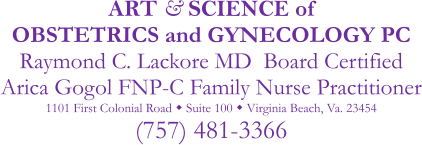Mastitis – Yeast Infection of Breast
YEAST MASTITIS: (of the Nipple and Main ducts) Candida (also called yeast, or thrush) is a fungus that occurs naturally in the mucous membranes and on the skin. If you have yeast on your nipples, or if your baby has it in his mouth, your milk supply will often decrease. Resulting pain inhibits the let-down reflex, and babies with yeast often do not nurse as efficiently as they do when their mouths are not sore. Yeast infections may also lead to plugged duct and mastitis. Once the infection is cleared up, you should be able to build your supply up again quickly. Mother and baby must be treated together in order to clear up the infection. During pregnancy, yeast infections are more common because high levels of estrogen lead to elevated levels of sugar, and yeast feeds on sugar.
SYMPTOMS: Severe stinging, burning pain – either on nipple surface or felt deep inside the breast. Pain often continues throughout the feeding and in between feedings – especially immediately after. (Nipple pain caused by incorrect positioning and latch on rarely hurts except when the baby is nursing). Sometimes sharp, shooting pain radiates from the nipple into the breast or into the back or arm. Nipples are sensitive to light touch, so it may hurt to have clothes rubbing against them, and it may be very painful to take a shower and have the hot water spray touch the breast. Mothers describe the pain as ‘liquid fire’, ‘hot needles’, ‘razor blades’, ‘a piece of glass stuck in my nipple’, etc. I’ve heard many mothers say that they would rather go through labor again than have yeast on their nipples or in their milk ducts, which gives you an idea of just how painful this condition is.
APPEARANCE: The nipples may look puffy, scaly, flaky, weepy, or have tiny blisters. They may be itchy. The color is often a deep pink. The nipples may also look completely normal, but be terribly painful (just as the baby’s mouth may be infected, but not have white patches). Generally, the nipples don’t “look as bad as they feel”, so there is often a tendency to underestimate the severity of the problem based simply on visual examination of the nipples.
.
MANAGEMENT:
Wash hands often (before and after nursing, using the bathroom, or changing baby’s diaper). Use very warm soapy water and paper towels.
Nurse frequently for shorter amounts of time starting on the least sore side. Ice wrapped in a washcloth may help numb the nipple before beginning to nurse. Take Advil 400 mg (if not allergic)(with food) every 4 hours around the clock. If it becomes too painful to nurse, you may want to pump your milk temporarily and feed it to your baby by cup or bottle until the pain lessens. Expressed milk should be fed to the baby while you are both being treated for yeast, and not saved for later use, since refrigerating and freezing the milk does not kill all the yeast.
Try drinking green tea 3 or 4 times a day. It may help cleanse your system of excess yeast, so it certainly won’t hurt to try.
Decrease consumption of sugar and/or yeast (beer, wine, sodas, bread, desserts, etc.).
After nursing, rinse the nipples with a solution of one cup of water plus one TBSP of vinegar. Air dry well. Apply antifungal creams as prescribed by your doctor.
IMPROVEMENT: Is expected 24-48 hours after starting treatment, you should feel some improvement. (Sometimes you can tell a difference after just one application. In some cases, symptoms temporarily get worse before they get better – so be sure to continue the treatment for at least the full 48 hours. Be sure to remain in close contact with your health care provider during treatment, because yeast presents a variety of symptoms an requires continuing reassessment and adjustment of treatments to provide optimal relief and effect a cure in the shortest period of time. Try not to become discouraged. Please let me know if you have any questions at any time, and we will work on the problem together.
ONLINE INFORMATION: www.vbgyn.com/mastitis-yeast-infection-of-nipple-and-duct
TREATMENT OF CANDIDA MASTITIS:
1. Start by gently massaging anfungus creams to the mother’s nipple area after each breastfeeding session – such as miconazole (Monistat cream) or clotrimazole (Gyne-Lotrimin) for 14 days… also
2. Have pediatrician treat Infant at the same time:
….a. Give nystatin suspension 100,000 IU four times daily after meals.
….b. Alternately Give infant Miconazole Oral Gel 25mg four times daily (Gel was significantly superior to nystatin suspension with regard to efficacy, rapidity of achieving a cure, and oropharyngeal yeast eradication).
TREATMENT OF PERSISTENT CANDIDA MASTITIS:
If the pain persists beyond the course of treatment
Fluconazole (Diflucan) 200 mg/day for two to four weeks is recommended for the lactating mother or
Oral nystatin (Mycostatin) 500,000 U/day.
Clinicians often hesitate to prescribe oral fluconazole to breastfeeding mothers because of a concern that it will pass into breast milk; however, oral fluconazole has long been used in neonates and immunocompromised children. This makes its use less concerning, given that less than 5% of the recommended pediatric dose passes from the mother into her breast milk. Therefore, even if the mother is given oral fluconazole, the infant still must be treated for thrush, because the amount of medication that passes into the breast milk is insufficient to treat the infant.
There are higher rates of Candida colonization in infants who use artificial nipples. Therefore, eradication of the yeast on bottles, pacifiers, and breast pumps is an important part of treatment.
It is commonly believed that this may be accomplished by boiling rubber nipples and by washing bras, bedding, and cloth diapers in hot water, possibly adding 1 cup (approximately 236 mL) of distilled vinegar to the rinse water.

